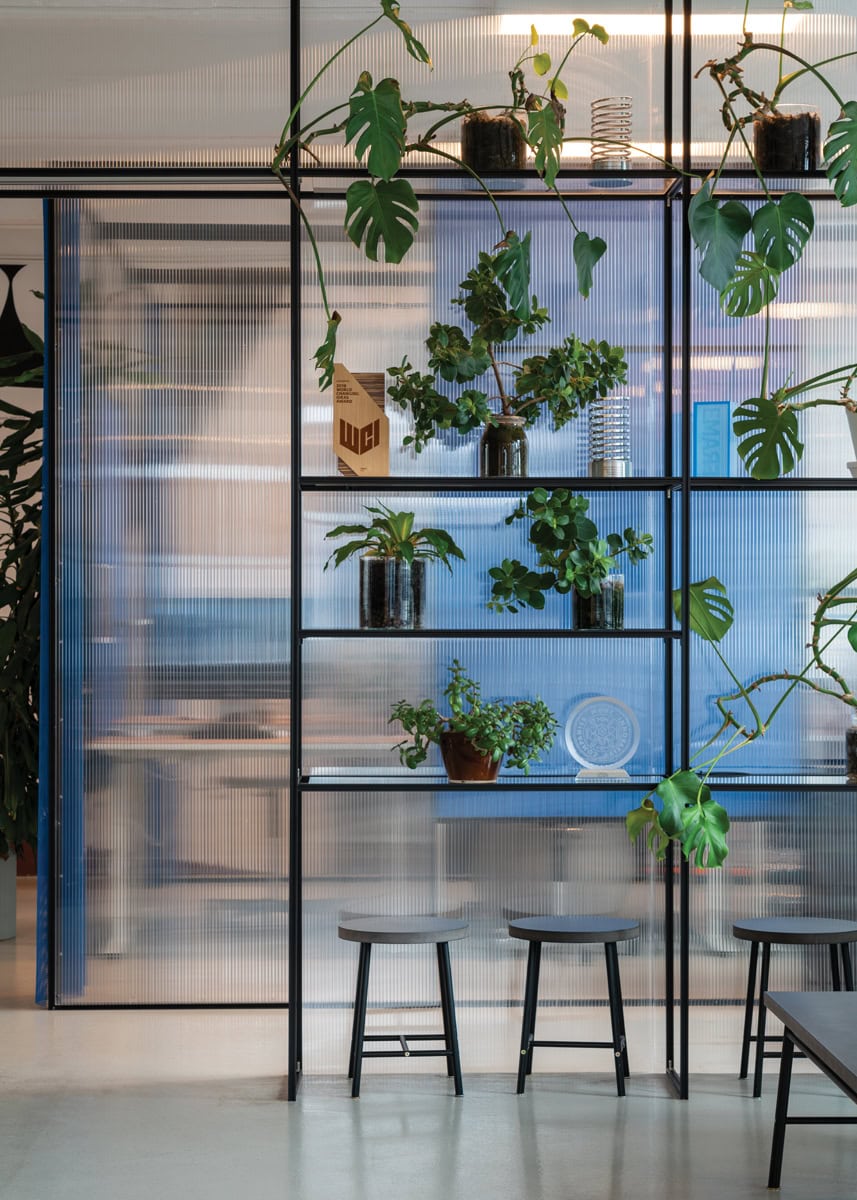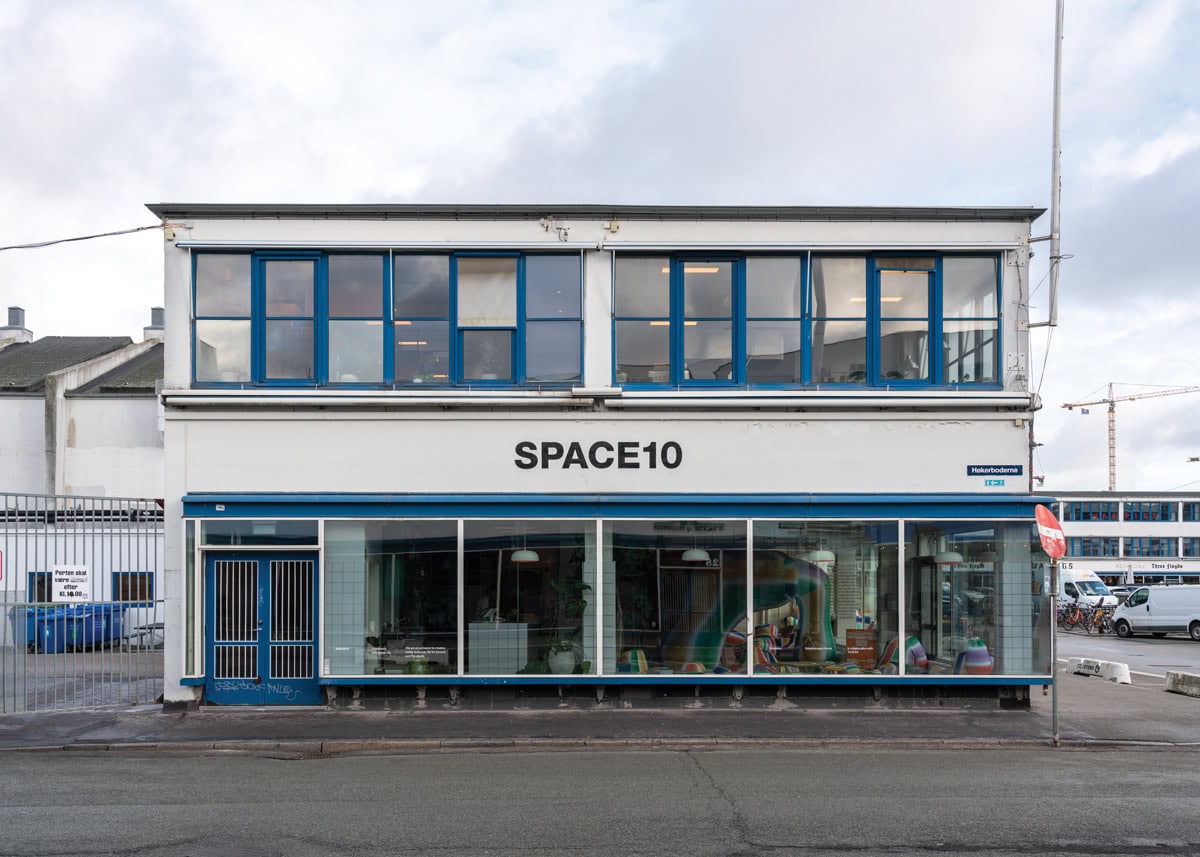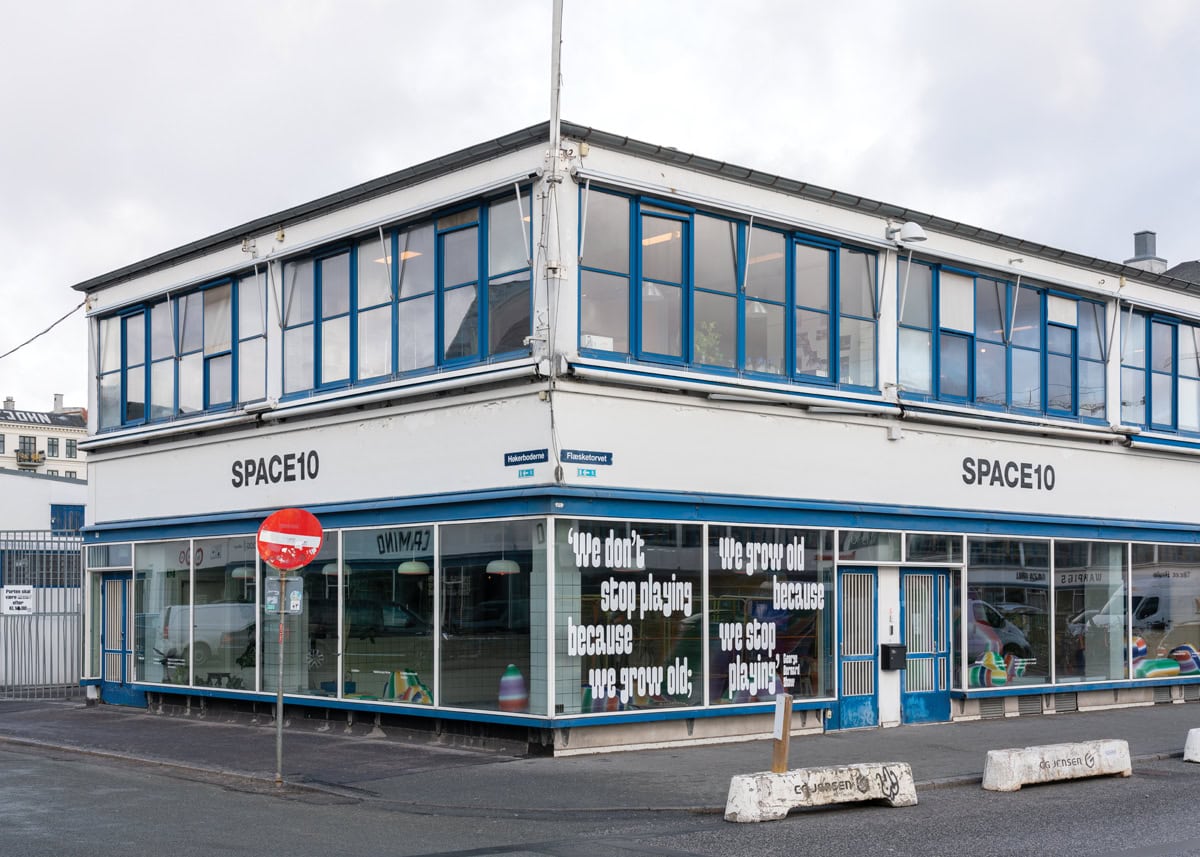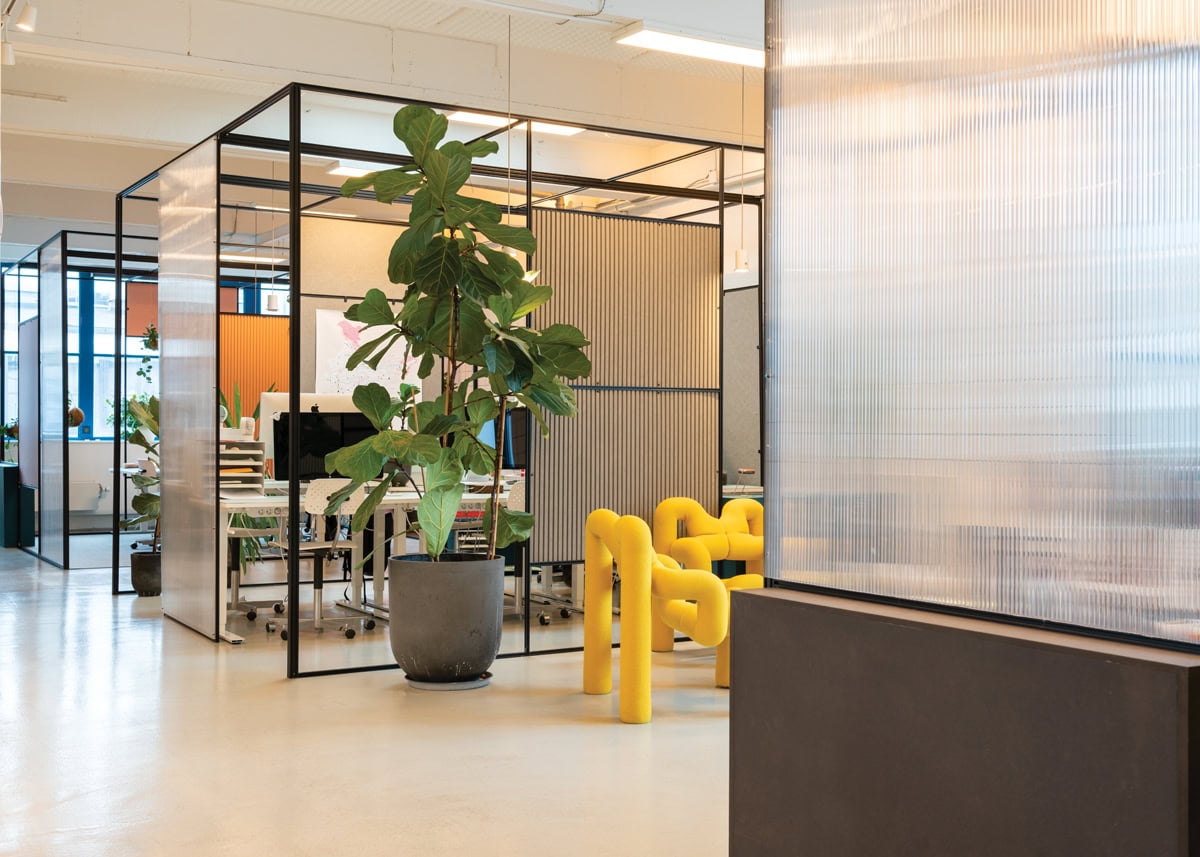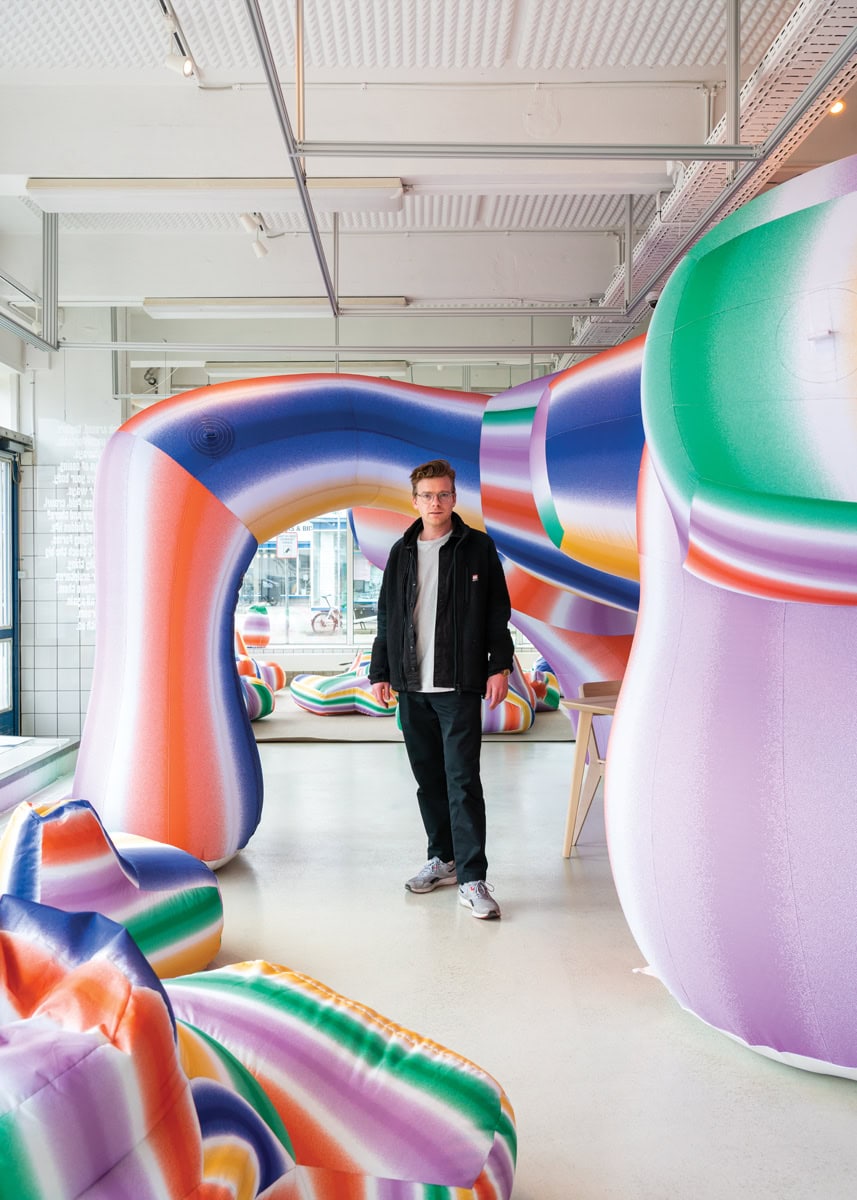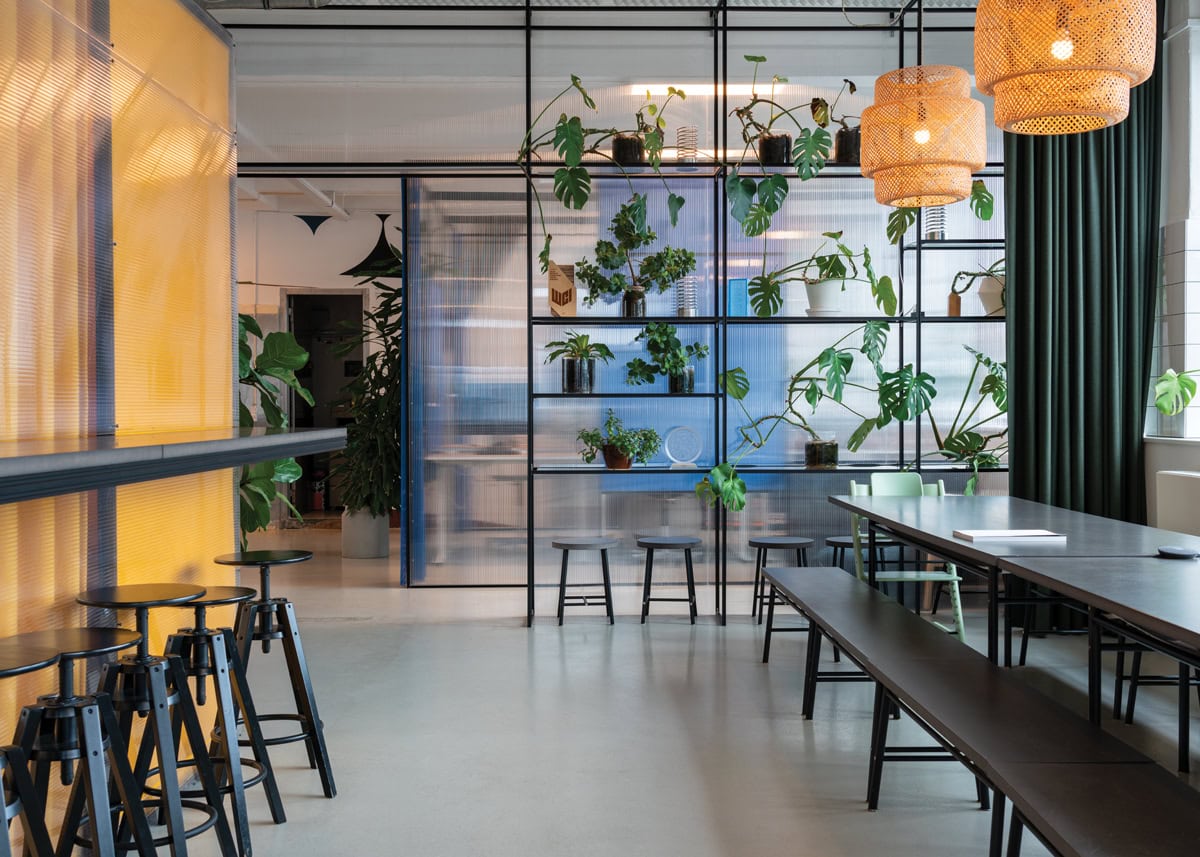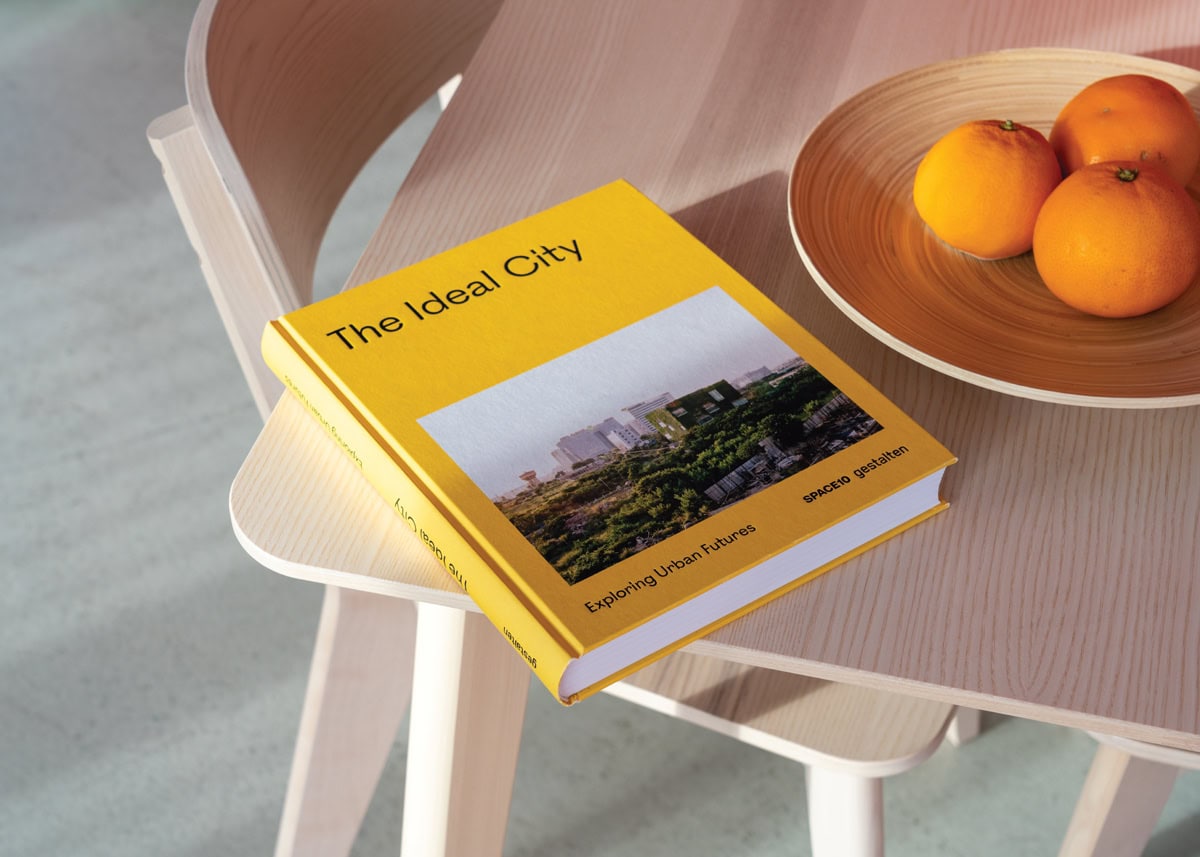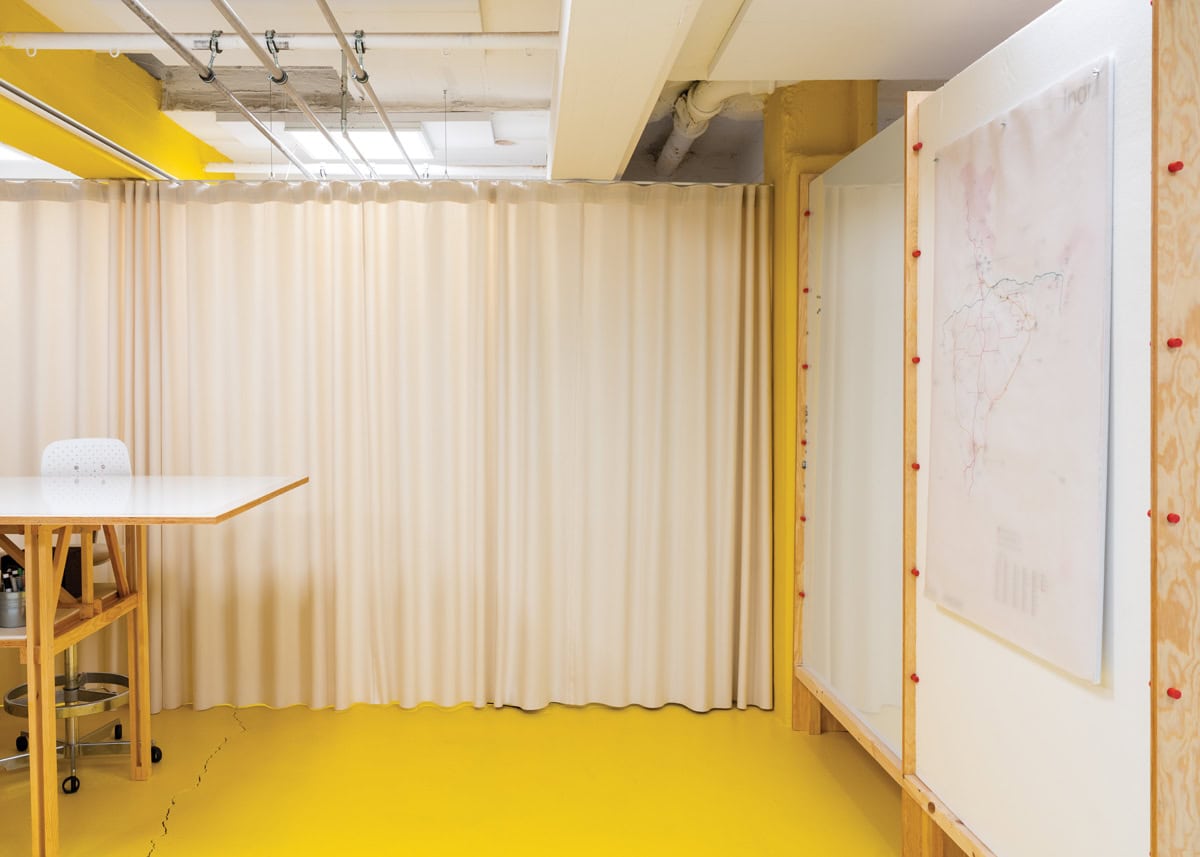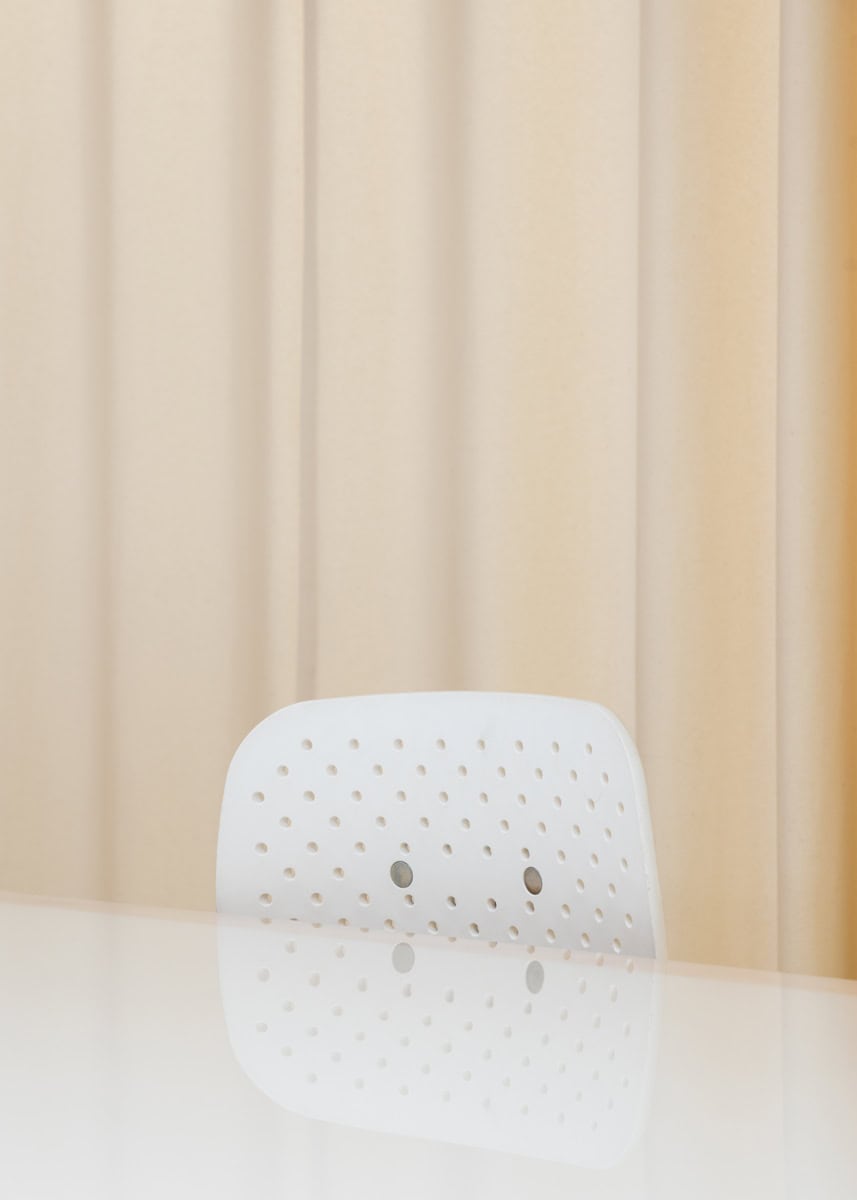What remains of the glorious idea of the ideal city today? Very little, it would seem. SPACE10, a research and design centre sponsored by Ikea, reflects on questions like this one and others regarding contemporary life and design. Human life is, in itself, a design object far removed from biology: we are constantly designing what it means to be human, what kind of body or culture we can inhabit. We too, if you think about it, are nothing more than “corkscrews”: we design the handle of our existence, the world through which it will be more or less elegant to open a bottle, we make every effort to design our desires in such a way that the cork doesn’t ruin the liquid we still have to drink. Speculative design, which technically comes before product design, has a decisive role in the near future. The general SPACE10 guideline is to “create a better future for the planet and people”. At this point, very few people believe in the compatibility of these two things.
If human progress continues as projected, with an increase of two billion in world population and an inordinate increase in polluting resources from digital to meat, it seems impossible to believe that the wellbeing of both the ecosystem and human beings can coincide. Yet it seems necessary to come up with an alternative that uses imagination and creativity as viable forces instead of failing realism. This is the premise for my conversation with Simon Caspersen (Co-Founder at SPACE10) and Tony Gjerlufsen (Head of Technology).
Leonardo Caffo: Your research into the ideal city seems to have revealed, to quote a recent expression by Rem Koolhaas, something more similar to a “no longer idea of a city”. What is there beyond the city as we know it today?
Simon Caspersen: It’s hard to talk about what lies beyond the city as we know it today, because what even is a city of today? Cities are quite unique manifestations, each constructed by their own given history of politics, economy, culture, inhabitants, geographical location, climate and so much more, which makes each city one-of-a-kind. And luckily, the days of modernist beliefs in a uniform, top-down, one-size-fits-all city are long behind us. So what lies beyond the city as we know it today? Obviously trends like digitisation, accessible internet connectivity, new improved communication technologies, distributed energy, convenient services, emerging automated mobility, and new delivery systems and technologies have made setting ourselves up anywhere and in new constellations a much more realistic option for a lot more people in certain professions.
This, combined with a push out of the city by the affordable housing crisis in almost every major city and a pull in terms of a yearlong lockdown, has made a lot of people re-evaluate their everyday lives in cities. However, I personally don’t believe that we will see a massive global shift where people will leave the cities behind. I think some city populations will decrease in the coming years, but I would actually tie that more to countries in Europe and Asia where the overall population is getting older and there is a low-fertility rate, meaning that the size of the overall population is declining. I believe that cities will be more important and attractive than ever. Especially in Africa and Asia where 90% of urbanisation will occur, according to the UN. Cities are still where the opportunities are and for many reasons—whether you are a farmer challenged by failing crops due to climate change, a young person seeking an education (plus freedom, friends, and adventure), a young professional seeking a career (and a partner), a young family in search of a better life, or a grandmother who wants to be close to activities, public transport, and supportive family, friends and grandchildren. The city offers opportunities. And almost as importantly, humans are social animals and we enjoy the presence of other people, which cities also offer in abundance. On top of this, the density and scale of cities will be crucial for tackling the accelerating climate crisis. Right now, cities are at the heart of the problem, but cities will also be at the heart of the solution. Cities as an ecosystem are more important than ever for both people and the planet. That said, cities need to be reimagined and I mean how we plan, design, build and finance our cities going forward, because the to-do-list is growing pretty long. We need to design cities for people rather than cars, we need to combat our dependence on fossil fuels and private cars, and we need to rethink our food production system to make our food a lot more local and a lot more regenerative. We also need to rethink our construction industry as both food and construction are massive drivers of the climate emergency. We need to make our existing built environment a lot more energy efficient and ensure more affordable housing as well as well-planned and mixed neighbourhoods that offer more opportunities for more people. Our cities need to be green, safer, and more inclusive. We need climate resilient cities as extreme weather will increase in intensity and frequency and we also need to acknowledge that rural areas and urban areas are interdependent, which means we have to protect the natural environment we already have, and protect the biodiversity and soil around our cities, as our livelihoods, economies, health and quality of life depend on that. We also need healthier cities in order to improve our mental wellbeing since city dwellers deal with a lot more stress, depression, and loneliness. Finally, we need our cities to improve for our physical health and that means addressing air pollution, safe mobility, sanitation, and so much more. The interesting part is that we already have the knowledge, the technology and the answers to solve all of these challenges if we choose to act and assert what we know. All the above sparked the concept for our book The Ideal City. We wanted to take a holistic and multidisciplinary approach to how we should design our cities going forward. We sat down with world-renowned architects, designers, researchers, entrepreneurs, city planners, and community leaders to explore a better way forward for our cities and combined it with solutions from 53 different cities around the world.
From solutions for innovative food systems and energy production to schemes for diverse and inclusive housing and mobility. The aim was to create an inspirational cookbook to provoke the collective imagination—stuffed with ingredients and recipes for cities to dig into, get inspired by and create local solutions with. When reimagining our cities, a good starting point is simply to ask ourselves: what kind of cities do we want to live in? What do we believe is important for a good life? And what makes a good home for all of us? The Ideal City is now being brought to life in VR at The Barbican Centre in London on 5 May 2022 for the Our Time On Earth exhibition. We have created a large installation with three interactive binoculars, which invites people to explore and experience how three speculative cities have tackled the accelerating climate crisis while creating a better everyday life for the people who live there. The installation is based on the book and we weave in ideas and projects from The Ideal City to give visitors a glimpse of what a more desirable urban future could look and feel like, in our opinion. And to summarise, our Urban Village project gives a clear indication of how I, at least, imagine my ideal neighbourhood might look and feel. Clusters of circular, community-oriented neighbourhoods with a mix of people from all walks of life and where everything needed on a daily basis is accessible within a 15-minute walk and efficient public transportation interconnects the entire city to make everyone close to everything.
LC: The SPACE10 mission statement is to “create a better future for people and the planet”. Are you sure that these two types of better futures can really coincide?
SC: They need to coincide. I can’t see a better future without them coinciding. This is the biggest creative challenge that we face as a species and a challenge that we need to solve. At SPACE10, we believe we need to change the definition of what constitutes good design in our day and age. In Beyond Human Centered Design, we argue that we have grown disillusioned with a design method that puts individuals first, without looking at society as a whole or the planetary boundaries, and that this has, as a result, overstretched the resources of our planet many times over without solving longstanding injustices. We believe that design that does not benefit our planet ultimately does not benefit people. On 26 March 2022, we are holding a pop-up in Mexico City where we will be joined by people smarter than us to help us explore how we design ourselves out of the mess we have designed ourselves into. It will be an event to launch 14 public events with 50 speakers, exhibitions, workshops, hackathons and so much more, to tackle this question: how do we design for the wellbeing of both the many people and the planet?
LC: There is something deeply linked to Enzo Mari’s concept of self-building in your idea of design. Your collaboration with Ikea shows that you can try to do with the future what they did with the home: provide an instruction booklet so people can fend for themselves in assembling their own personal ecology. Am I right?
SC: Yes, we really believe that design should be democratic and so does IKEA. Enzo Mari is a pioneer and introduced me to the ethos of open-source design before opensource design. We also have several of Enzo Mari’s designs at our office in Copenhagen (hacked, of course) and we use Enzo Mari designs when we pop up in new cities like Mexico, because good design should be democratic. We have been inspired by his approach and taken advantage of the digital age we live in to open source a lot of our projects—including our spherical garden The Growroom, a downloadable modular house, and personal Bee Homes. When we released both The Growroom and Bee Home, the designs were immediately available freely for anyone anywhere in the world and tens of thousands of people downloaded them within the first week. We have seen both The Growroom and the Bee Home pop up in every corner of the world ever since. I think open source is one of the most exciting opportunities of our time. One thing is that open source and advancements in digital fabrication will allow us to make almost anything available anywhere, on demand. These can be produced with local materials and benefit the local economy. But open source also enables us not only to share but also to learn, build upon and develop together. Suddenly, it’s the collective creativity and knowledge of the world working together on constantly improving a solution that is available for everyone everywhere. That’s exciting. We just recently introduced our Plug & Play programme, which is based on this idea as well. Anyone who would like to exhibit our work around the world can simply visit our library of projects, download the assets with helpful instructions from us, and enjoy and further the reach of our research and ideas.
LC: Ed Catmull said that “the future is not a destination but a direction”. This is one of the principles that guides your design work: how do you distinguish the future from progress?
Tony Gjerlufsen: The quote sees them as two sides of the same coin: the future is a projection in part shaped by the actions (progress, if you will) of today. For me, this has two overall implications. One, that The Future is a design device in and of itself, and two, that the notion of better or worse futures becomes less static; there are better or worse directions and by implication better or worse actions. In that sense, the quote carries this basic optimistic and very human belief that a better future is really made better one action at a time.
LC: Among your mission are two ideas that I find incompatible, that of ecological transition and that of digital and technological transition. Digital is one of the main causes of pollution and destruction of the planet, how can you put design at the service of both these things without contradicting yourself?
TG: I don’t see them as inherently contradictory but rather interlinked. It is clear that we need an ecological transition towards an equilibrium that works for both humans and the world if we are to remain on the planet in the way that we are used to. A good part of that transition would be accomplished by addressing production and consumption problems with technology in general (in the broadest sense), and where digital technology presents a special case is in the energy it spends in use. Digital is still new in developmental terms and many in the older generations still see it as a thing in and of itself. We speak of a divide between digital and physical and, until recently, we spoke of going online. This same perspective is not as prevalent in the younger generations who have grown up with smartphones and the internet. For them, it’s more a contiguous field of interaction where we humans are naturally and intuitively the soft tissue in-between. When it comes to it, digital technology is a highly malleable design material, and I believe we should work to use it in the service of the change we would like to see in the world. I think that a good part of the digital transformation agenda should be concerned with how it may be applied to support much-needed ecological change. An example of this is SolarVille, which explores how the combination of solar photovoltaics and blockchain technology could enable us to reimagine our energy system in the pursuit of democratising access to clean energy. Here, the idea is that some households generate their own renewable energy using solar panels, while others automatically purchase excess electricity directly from the producer using blockchain technology. The result is a model for a self-sufficient, community-driven microgrid, where people trade renewable, affordable energy from one another according to their individual needs. Another example application of blockchain technology is our Everyday Experiment Chain of Traceability. Ultimately, the world is not short of complex information, but the transparency that blockchain brings will have less value if that information does not reach people in a way that is actionable and understandable. This experiment explores the question of how we could use three dimensions and the natural context of augmented reality to see where a product comes from, what it’s made of, and how we can repurpose it once its primary use wears out. Lastly, as mentioned by Simon, we have also worked with the question of how the digital transformation of fabrication can enable new and more sustainable ways of manufacturing. Bee Home is a free and open-source design that enables anyone, anywhere, to support their local pollinators and take action in preserving the world’s biodiversity. The Grow Room is an open-source, spherical garden that enables people to grow food locally and sustainably. Underneath, they both explore how open-source design coupled with digital manufacturing can improve the way we design, fabricate and distribute physical products. They are based on a vision of a future where anyone anywhere feels empowered to design, customise and fabricate their own sustainable products locally.
LC: The last question was intended to provoke, of course, I know you have an ethical approach to technology design as well. In this regard, how can you design an idea of disconnection from the grid? What design devices would you use?
TG: I guess that fundamentally relies on the question of whether it is a philosophical exercise, or something else. If it is, you’ve provided a good candidate in the question below, with the Sottsass editorial.
LC: Play, within a tradition that seems to take up the ideas of Ettore Sottsass’s anti-design, is fundamental for you. Sottsass himself, in a famous editorial for Casabella, spoke of the planet as a playground and our hope for the future of humanity. What space do you see today for all this? How much could technology help us here?
TG: Play has always been important to SPACE10. It is one of the purest forms of creativity, and the power of play allows us to explore freely, and to use our imagination to go beyond the expected and learn hands-on. Our world is not simple and there are plenty of challenges that need to be overcome. We use play and playful approaches as components in turning complex issues into clear, engaging visions. To enable people to imagine the possibilities of what we could achieve together. The current climate challenges make this probably the most important decade in modern history and we need all hands on deck. Part of our work is to fuel the fire of optimism, especially in those who dream of building solutions. We also try to support a sense of direction that points to a more sustainable future. Because without optimism and direction, I really don’t think we stand much of a chance. For a long time, technology has been used as a vehicle for imagining better and brighter futures, and I think there’s still plenty of room for that. In a sense, it creates an opportunity to establish imaginary foundations, where some or most (or all, as in the case of Il Pianeta Come Festival by Sottsass) of the world’s problems have been solved. And building on those foundations, we can then play with future life, postponing the problem of figuring out how to actually get there. Spaces on Wheels succinctly embodies that practice. The project rests on the observation that we spend a lot of time commuting in our part of the world. It establishes a world where level 5 (full) autonomous driving is abundant. In such a world, where the steering column and accelerator and brake pedals will have been rendered needless and designed away, what we’re left with are literal spaces on wheels. The project then uses that as a premise to playfully explore what those spaces could become. However, we should also go beyond imagining better futures, in that there is an inherent opportunity to reflect on and critique the direction of the present. Spaces on Wheels makes a clear point of that in a way that bears resemblance to the anti-design critique of modernism. A quick search on Google proposes that the future of cars is chrome polished, sterile and optimised. Spaces on Wheels represents a playful and optimistic counter narrative to that with its rounded corners, plump and soft colourful shapes. It invites people to reflect on the fact that while a car can be viewed as a tool made for efficiency, a space on wheels should enable you to feel at home. They don’t come for free, however, these figments of imagination. Vision without action presents a double-edged sword in that it easily presents a false sense of accomplishment to the world. In essence, establishing these visions is taking out a loan on the future work of man and that loan will need to be repaid in order to get there. When we forget that, the optimism turns into escapism. We try to remain very cognizant of that obligation in the way we use our work to spark movement, develop solutions and play with technology. In the end, technology is an extension, more than an externality, of humanity. It is part of the human narrative in that it also acts as a mirror that reveals the complexity of our world to us. That should be used as a strength.
LC: Trying to be local, trying to understand that there is not one desire to which design must submit but many desires. Those of different peoples, genders and geographies. What is an anthropology of design?
TG: A hallmark of good design is sensitivity to the sociocultural context in which it is applied. But there is a natural conflict between anthropology and design, in that design is inherently about the future whereas anthropology will naturally be about describing the past or present. With a background in experimental computer science, I’ve always had a strong leaning towards the participatory design tradition, something which we have also practised at SPACE10. While not limitless, what participatory design achieves is a workaround to the conflict by enrolling the people for whom the design is intended into the design process and therefore the design itself. They engender their own desires, genders and geographies. That becomes interesting when considering how it translates to moving beyond the human-centred design agenda to take both people and planet into account. While people naturally speak for themselves, who could take on the role of speaking for the planet? One of our recent explorations was the Ancestral Futures residency, wherein we explored topics such as intergenerational wisdom and how Indigenous thinking could help us to understand the connection between productivity and the planet. This remains a topic of exploration for us and will be a common thread throughout some of the events and conversations we will be having when popping up in Mexico City in March/ April 2022.
LC: Space is always local and you operate everywhere from London to Delhi. Differentiating is therefore essential for your concept of design. Is globalisation, even creative globalisation, a model to be overcome?
TG: The mission of SPACE10 is to create a better everyday life for people and the planet. As such, our audience reaches well beyond our own locality. What we’ve always found when moving into other contexts, regardless of whether it’s London or Delhi, is that it brings a lot of needed insight, depth and texture that we can’t always attain from behind a desk in Copenhagen. We are also quite biased towards understanding through action when on the ground. In London, we set up an in-space hydroponic farm and salad bar for testing a hyper-locally grown food offering. When we pop in Mexico City a few weeks from now, we will be running a hackathon that focuses on exploring what is important to the people of Mexico City regarding future technologies, potential applications of these technologies in the home, and possible adoption behaviours on both individual and community levels. When it comes to the question of to what extent (creative) globalisation is a model to overcome, I think it’s impossible to know yet. While we are increasingly working with the benefits of localisation and appreciation of local conditions in design, it too comes with limitations and we should take care not to switch one oversimplification for another. Perhaps we should see them instead as poles in the space between specialisation and generalisation of design and seek to understand where they work and fail respectively. While we are very focused on appreciating the special conditions that make local design great, we must also remember that, in the words of Jan Gehl: “It is the same creature that lives in all corners of the world. It’s homo sapiens.”
